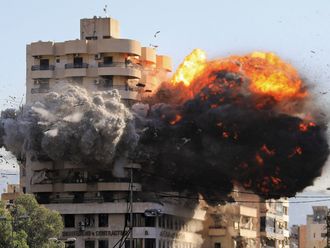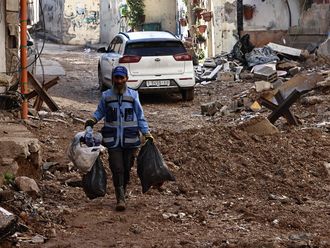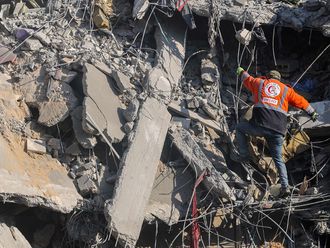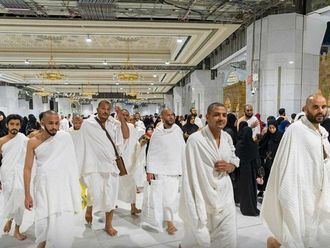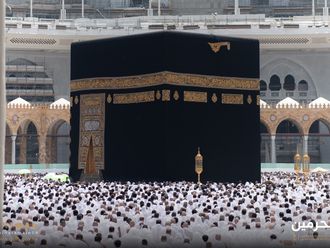Cairo: The Egyptian government will start soon a nationwide plan to give residential buildings a standard facelift aimed at curbing visual pollution and boosting the country’s image.
The move, based on a largely inactive law issued in 2008, comes at an order from President Abdul Fattah Al Sissi whose administration has given a top priority to rehabilitating slum areas across the country of nearly 100 million people.

Home owners, mainly in informal housing areas, often leave the fronts of their red-brick tenements unpainted to cut the cost, a practice the government says make them look ugly.
Prime Minister Moustafa Madbouli, who doubles as the housing minister, has instructed governors of provinces to ensure that red-brick houses are properly painted.
The government has vowed to enforce the law and warned violators.
“Law No 119 for the year 2008, related to building rules, obliges citizens to paint the fronts of their houses as a condition for obtaining an instruction licence,”said Khaled Qassim, a spokesman for the Local Development Ministry, which is in charge of municipalities.
“We encourage people to comply with this stipulation, which is at the end of the day in their interest as it makes their houses look beautiful. We will send warnings to violators and then apply the penalty stated in the law,” he added.
While there is no clear penalty in the law on failure to paint the facade of a building, the same code stipulates a minimum jail term of six months and a fine two times higher than the value of works “violating construction designs”.
Reviving the law has triggered a row between home owners and tenants over who should bear the cost of the obligatory face-lifting.
“I bought my apartment about three years ago for nearly 750,000 [Egyptian] pounds (Dh156,250). Why should I now contribute to the cost of repainting the front of the 10-floor building?” said Abdul Salam Mahmoud, who lives in the quarter of Hadyek Al Quba in east Cairo.
“Either the original owner of the building or the government should bear the cost. We cannot cope with soaring costs of living. So, how can we pay for painting the building?” added Mahmoud, a shopkeeper.
In recent months, Egyptians have experienced waves of price hikes as a result of austerity measures, which the government said are necessary for overdue economic reforms.
Over the past decades, real-estate purchases have been the trend in Egypt as millions of Egyptians working in the oil-rich Gulf countries have used their savings to buy apartments or build new houses in the home country.
“No one can underestimate the importance of having a unified painting for the fronts of residential buildings in each area,” said Mokhtar Helmy, a construction contractor in Cairo.
“This measure will end the chaos of haphazard house paintings. In addition, unifying the colour of facades will raise the price value of houses,” he added. “But expense of coating should be paid by the present occupants, not the contractors who have already sold them.”
The government has made it clear that it will not finance the face-lifting scheme, saying the buildings are private properties.
A specific colour will be designated for each residential area.
Months ago, historic buildings in central Cairo were repainted yellow as part of a renovation scheme, aimed at regaining the glory of the area once dubbed the “Paris of the East”. The project was largely funded by civil society groups and private entrepreneurs.
“The first phase of the new [national face-lifting] project will cover buildings along the road leading to the Grand Museum west of Cairo,” said Mohammed Abu Saeda, the head of the governmental Agency for Urban Landscaping. Egypt is constructing a mega-museum near the Giza Pyramids where the country is planning to display a wealth of its ancient artefacts.
Abu Saeda added in media remarks that the agencies concerned with the scheme are currently identifying the buildings that will be covered by the facade-coating programme in order to decide on the suitable painting colours according to their climate conditions.
“The painting of buildings in coastal cities such as Alexandria and Port Saeed will be white, while those of southern areas will be dominated by earth colours in order to withstand the high temperatures there,” he added.


